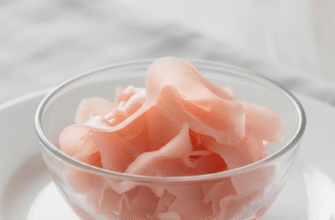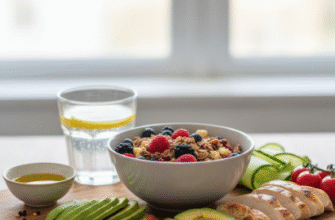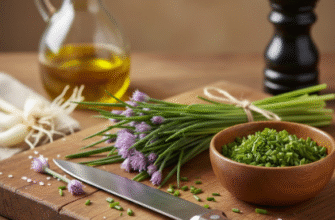That first cup of coffee or tea in the morning is more than just a beverage for many; it’s a ritual, a moment of peace before the day truly begins, a comforting warmth that eases us into wakefulness. While the simple pleasure of a plain black coffee or a fragrant herbal tea is undeniable, there’s also an opportunity to gently enhance this daily staple, adding not just intriguing flavors and textures, but also a little extra nutritional substance without turning it into a complicated affair. Think of it not as a drastic overhaul, but as a simple upgrade to something you already enjoy, making that beloved morning moment potentially even more rewarding.
Why bother adding things to your perfectly good brew? It’s not about fundamentally changing the experience, but rather layering upon it. Adding certain ingredients can introduce fascinating new taste dimensions, transforming a familiar drink into something novel. Think of the aromatic warmth of spices or the rich creaminess provided by healthy fats. Beyond taste, some additions can contribute beneficial compounds or simply make the drink feel more substantial, potentially bridging the gap until your first proper meal. It’s about making that morning cup work a little harder for you, in a gentle, enjoyable way.
Exploring Flavorful & Functional Boosts
The world of potential additions is vast, but starting with simple, common ingredients found in most kitchens is often the best approach. These aren’t exotic supplements, but rather familiar tastes used in a slightly different context.
Warming Spices: A Symphony of Aromas
Spices are perhaps the easiest and most impactful way to elevate your morning beverage. They add virtually no calories but contribute immense flavor and aroma.
Cinnamon: A classic for a reason. Its sweet warmth pairs beautifully with both coffee and many black or herbal teas. A simple sprinkle on top or stirred directly into the hot liquid can transform the character of your drink. Look for Ceylon cinnamon, often called “true” cinnamon, for a more delicate flavor compared to the bolder Cassia variety commonly found.
Ginger: Offering a lovely spicy kick, ginger brings a vibrant zest. Freshly grated ginger steeped in hot water before adding your tea bag, or a pinch of ground ginger added to coffee grounds before brewing, can provide a stimulating warmth. It cuts through richness and adds a refreshing note.
Turmeric: Known for its vibrant golden hue and earthy flavor, turmeric adds a unique dimension. While its taste can be potent, a small pinch, often paired with black pepper (which is thought to aid absorption, though we’re focusing on flavor here) and perhaps a little cinnamon or ginger, can create a warming, intriguing “golden” coffee or tea latte, especially when combined with milk or a plant-based alternative.
Cardamom: This aromatic spice, common in Middle Eastern coffee and Indian chai tea, offers a complex flavor profile that’s slightly sweet, minty, and smoky all at once. Crushing a whole pod slightly and adding it to your coffee grounds or steeping it with your tea leaves imparts a sophisticated fragrance.
Nutmeg: A dash of nutmeg evokes feelings of coziness. Its slightly sweet and warming flavor is potent, so a little goes a long way. It’s particularly delightful sprinkled over a milky coffee or tea latte.
Creamy & Rich Additions
For those who enjoy a richer, creamier texture in their morning cup, certain fats can add luxuriousness and potentially a feeling of sustained energy, though individual experiences vary.
Grass-Fed Butter or Ghee: Inspired by bulletproof coffee, adding a small amount (start with a teaspoon) of unsalted grass-fed butter or ghee (clarified butter) can create a surprisingly creamy, rich drink when properly emulsified. Grass-fed options are often preferred for their potential nutrient profile compared to conventional butter. Blending is key here to avoid an oily slick on top; a hand frother or blender works wonders to create a smooth, latte-like consistency.
Coconut Oil or MCT Oil: Medium-Chain Triglyceride (MCT) oil, often derived from coconut oil, is a popular addition for its purported quick energy release, as MCTs are metabolized differently than longer-chain fats. Both coconut oil (which adds a distinct tropical flavor) and the more neutral-tasting MCT oil need to be blended into hot coffee or tea to emulsify properly. Again, start with a small amount, like a teaspoon, as too much can cause digestive upset for some individuals.
Unflavored Protein Power
Collagen Peptides: If you’re looking to add a protein boost without altering the taste or texture significantly, hydrolyzed collagen peptides are an interesting option. These powders typically dissolve easily in both hot and cold liquids and are virtually flavorless. Collagen is a protein found abundantly in connective tissues. While research is ongoing regarding its benefits when consumed, adding it to your morning coffee or tea is a simple way to increase your protein intake for the day. Ensure you choose a reputable brand that dissolves well.
Deep Chocolate Notes
Unsweetened Cocoa or Cacao Powder: For chocolate lovers, adding a teaspoon of unsweetened cocoa powder or raw cacao powder (which is less processed) can turn your coffee into a mocha-like treat without the added sugars of typical syrups. Cocoa provides a rich flavor and pairs naturally with coffee’s bitterness. It also contains flavanoids. Ensure it’s unsweetened to control the sugar content yourself, if desired. Whisk it in well to avoid clumps.
Enhanced Plant Milks
If you already add milk to your coffee or tea, consider opting for fortified, unsweetened plant-based milks. Many varieties like almond, soy, oat, or cashew milk are fortified by manufacturers with nutrients such as calcium and Vitamin D. Choosing an unsweetened version allows you to manage the sweetness level yourself and avoid hidden sugars often found in flavored varieties. They offer creaminess and can subtly complement the base flavor of your coffee or tea.
Crafting Your Perfect Cup
Introducing new elements to your established morning routine should be fun, not stressful. It’s about experimentation and finding what genuinely enhances your enjoyment.
Start Simple, Start Small
Don’t try to add everything at once. Pick one new ingredient – perhaps a sprinkle of cinnamon or a small dash of MCT oil – and see how you like it for a few days. Pay attention to the flavor, the texture, and how it makes your usual cup feel. This gradual approach helps you pinpoint what you enjoy and prevents overwhelming your palate (or your stomach!).
Consider the Base
Think about the inherent flavor profile of your chosen beverage. Bold, dark roast coffee might stand up well to richer additions like cocoa or butter. Delicate green or white teas might be overpowered by strong flavors and may pair better with just a hint of ginger or perhaps nothing at all. Robust black teas can often handle spices like cardamom or cinnamon beautifully. There are no strict rules, but considering the base helps guide your choices.
Tools for Texture
Simply stirring additions in doesn’t always work, especially with fats or some powders. Fats like butter or coconut oil require emulsification to blend smoothly. A small, inexpensive battery-operated milk frother is fantastic for this, and also works well for incorporating powders like collagen or cocoa evenly. For larger amounts or a truly frothy result, a countertop blender is effective, though it adds an extra cleaning step.
Sweetness Savvy
Many popular coffee shop drinks are loaded with sugar. If you’re adding ingredients at home, you have control. If you prefer some sweetness, consider natural alternatives to refined white sugar, but use them sparingly. A tiny drizzle of pure maple syrup, a small dollop of local honey, or even a bit of date paste can add sweetness along with slightly more complex flavors. Remember, the goal is often to enhance, not to mask the original flavors with excessive sweetness.
Things to Keep in Mind
While boosting your brew can be beneficial and enjoyable, a few points are worth remembering. Taste is highly subjective; what one person finds delicious, another might dislike. Experimentation is key to discovering your personal preferences. Focus on sourcing good quality ingredients where possible – fresh spices, reputable oils, and unadulterated powders often yield better flavor and results.
Remember that enhancing your morning coffee or tea is about adding interest and perhaps some nutritional value, not about replacing a balanced meal. These additions contribute calories, fats, or proteins, so be mindful of how they fit into your overall daily intake. Always start with small quantities of new ingredients to assess tolerance and taste preference. Choosing unsweetened options whenever possible helps you manage your sugar consumption effectively.
It’s also crucial to listen to your body. If an addition doesn’t agree with you or causes digestive discomfort, discontinue using it. The aim is to make your morning ritual more pleasant, not to force down ingredients that don’t make you feel good.
Ultimately, transforming your morning coffee or tea doesn’t require expensive gadgets or obscure ingredients. Simple additions like a sprinkle of cinnamon, a dash of cocoa, or a spoonful of collagen can subtly shift the experience, adding new flavors, textures, and a touch more substance to your cherished morning cup. It’s an invitation to play with your food (or drink, in this case!), engage your senses, and perhaps discover a new favorite way to start your day. So, explore, experiment, and sip your way to a slightly enhanced morning ritual.








